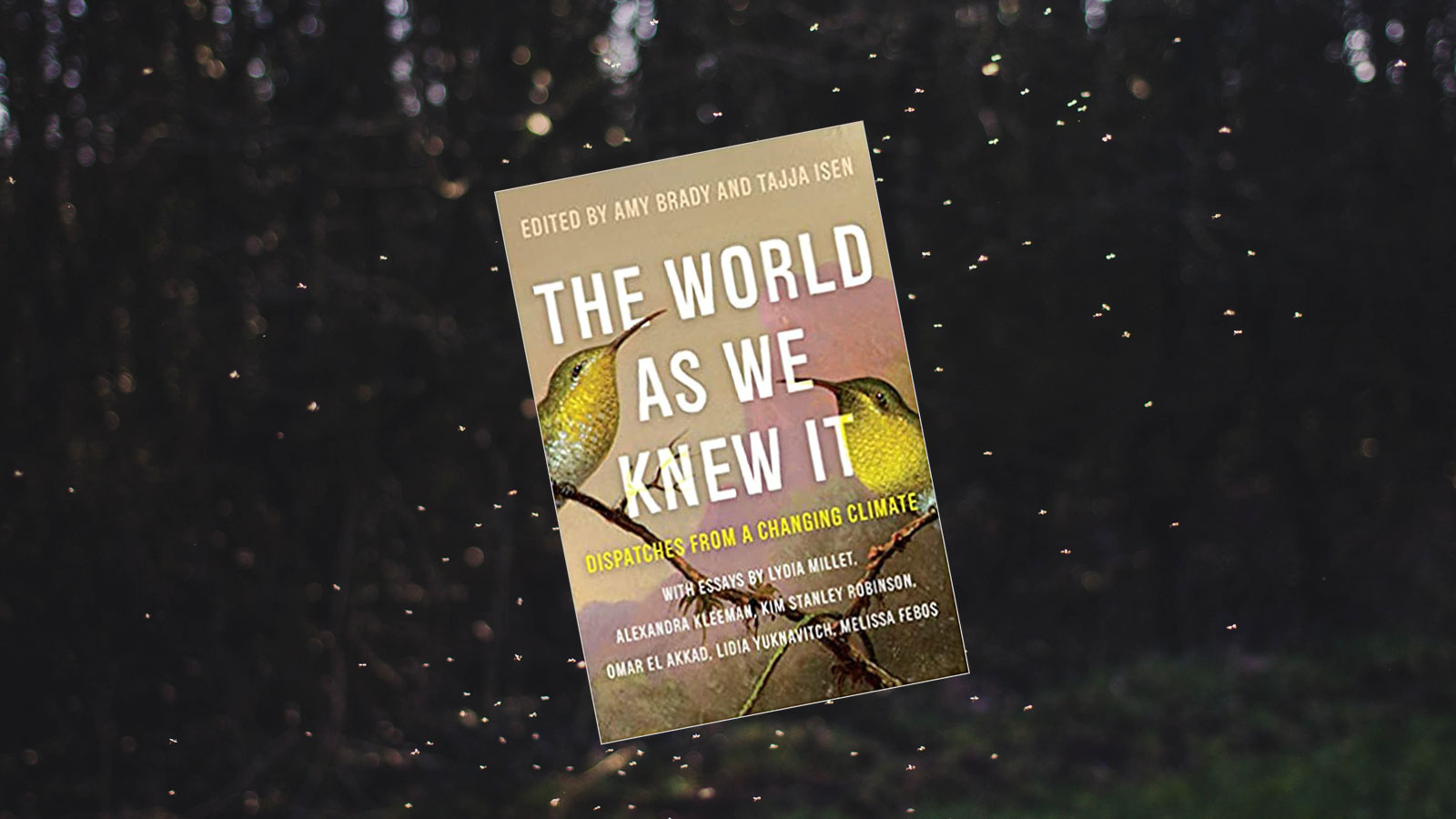What does climate change mean at the level of the everyday when the places we love and the geographies that shaped us are changing in real time?
Amy Brady and Tajja Isen invited 19 writers to take this question and run with it, making the end result an eclectic and beautifully written anthology marked by sadness and grief. But there’s wonder too, and occasional glimpses of possibility.
The World as We Knew It opens in the Kansas of Amy Brady’s childhood, a place she remembers for its long summer nights of fireflies and shooting stars. “It never occurred to me that nights like those wouldn’t always be possible.” But Kansas has changed. And just a few weeks ago, a June heatwave killed thousands of cattle, their carcasses a grim portent.
Although a number of recurring themes connect the essays – runaway capitalism, structural racism, colonialism, and the importance of local Indigenous knowledge – each essay is unique, intimate, and free-flowing, with one thought leading to the next.
In “Faster than We Thought,” for example, Omar El Akkad moves across time and space, from ancient Mesopotamia to the present and from the Middle East to North America, eventually landing on an insight that stops one in their tracks. Climate change “is going to render our past as unrecognizable as our future” because, like the future, it will be burned, flooded, and re-imagined to meet the needs of whatever extremist groups emerge to fill the vacuum of our broken politics. “And without a past or a future, what are we?” El Akkad asks. “A flickering violence of a species, here for a short time, insatiable, then gone.”
‘Natural disasters are really unnatural disasters’ because of their disproportionate impacts.
Interested in climate justice, Mary Annaïse Heglar effortlessly blends her grandfather, hummingbirds, Hurricane Katrina, racism, and Emmett Till, the 14-year-old boy who, in 1955, was abducted, tortured, and lynched in Jim Crow Mississippi. Natural disasters, she writes, are really unnatural disasters because of their disproportionate impacts on poor people and people of color. “I never thought I’d see the Mississippi my grandfather had known when he was my age, or even the one my mother saw. The Mississippi that brutally murdered a 14-year-old boy for a wolf whistle that we now know never happened. But Katrina revealed fault lines that I could never unsee.”
For my money, Elizabeth Rush is the best climate field reporter out there, her 2018 book Rising a tour de force. Currently writing about Antarctica, she asks: What don’t we talk about when we talk about Earth’s southernmost continent? Spoiler alert, it’s women. If few men have been there, even fewer women have been to what the New York Times once called a “male sanctuary.” But her 2019 trip as part of the International Thwaites Glacier Collaboration taught her something important. Writing in the second person, as if to herself, she concludes, “From the women who went before you and with those whom you lived alongside, and perhaps, most profoundly, from the continent itself you learned this much: collective action alone will keep us alive.”
And so it goes, each essay its own island and yet part of a larger intellectual project to think about climate change as a lived reality and as something that every one of us is implicated in through the infinite capillaries of an unsustainable carbon economy.
“Most of us think of ourselves as good people,” Melissa Febos writes, “but sometimes I trip on the fact that I am a menace to all earthly life.”
Who can’t relate to that?
Or to this, by Delia Falconer? “As we pay our mortgages, shop for clothes online, or plan our next holiday, signs of unfolding catastrophe are everywhere.”
If one idea captures what this book is all about, it is place and the importance of place to who we are. And yet those places – the Iowas, the Missouris, the Staten Islands, and the Sierra Nevadas – have changed.
Kansas is changing, and rapidly, and here we are left with no Wizard of Oz ‘yellow brick road’ to guide us.
Although Lydia Millet realizes that her home in the Arizona desert is possible only because of her heavy water and carbon footprint, she knows also that she can’t live anywhere else. At one point, she wonders if she will be allowed to die and be buried in the desert, or if she will be compelled to retreat from a place so hot and dry that even the magnificent and giant saguaro cacti are suffering. “I don’t wish to die, needless to say, but it once comforted me to think it might happen here. And still does, when I’m feeling hopeful about the future.”
Together, these compelling and at times heartbreaking essays cover a lot of ground, but they start from the same assumption: the world as we knew it is gone. To quote Dorothy from the Wizard of Oz: “We’re not in Kansas anymore.”
But there’s no yellow brick road for us. And if even if there were, what’s to go home to? As Amy Brady and Tajja Isen remind us, temperatures now regularly reach the upper nineties in the Sunflower State. And in the coming decades, Kansas is expected to see a lot more days above 100°F.
The World as We Knew It: Dispatches from a Changing Climate. Amy Brady and Tajja Isen, eds. New York: Catapult Press, 2022.
Source link


